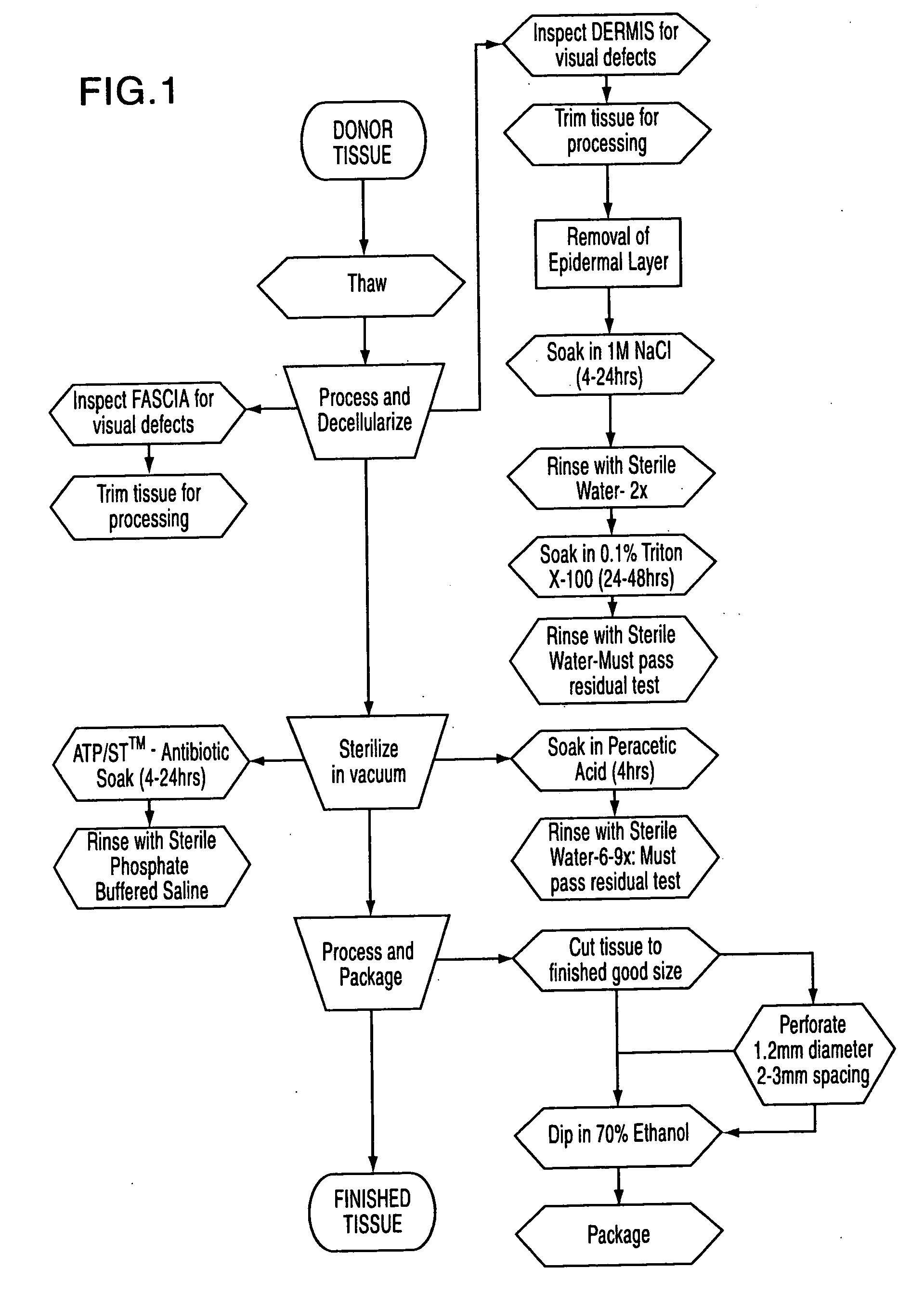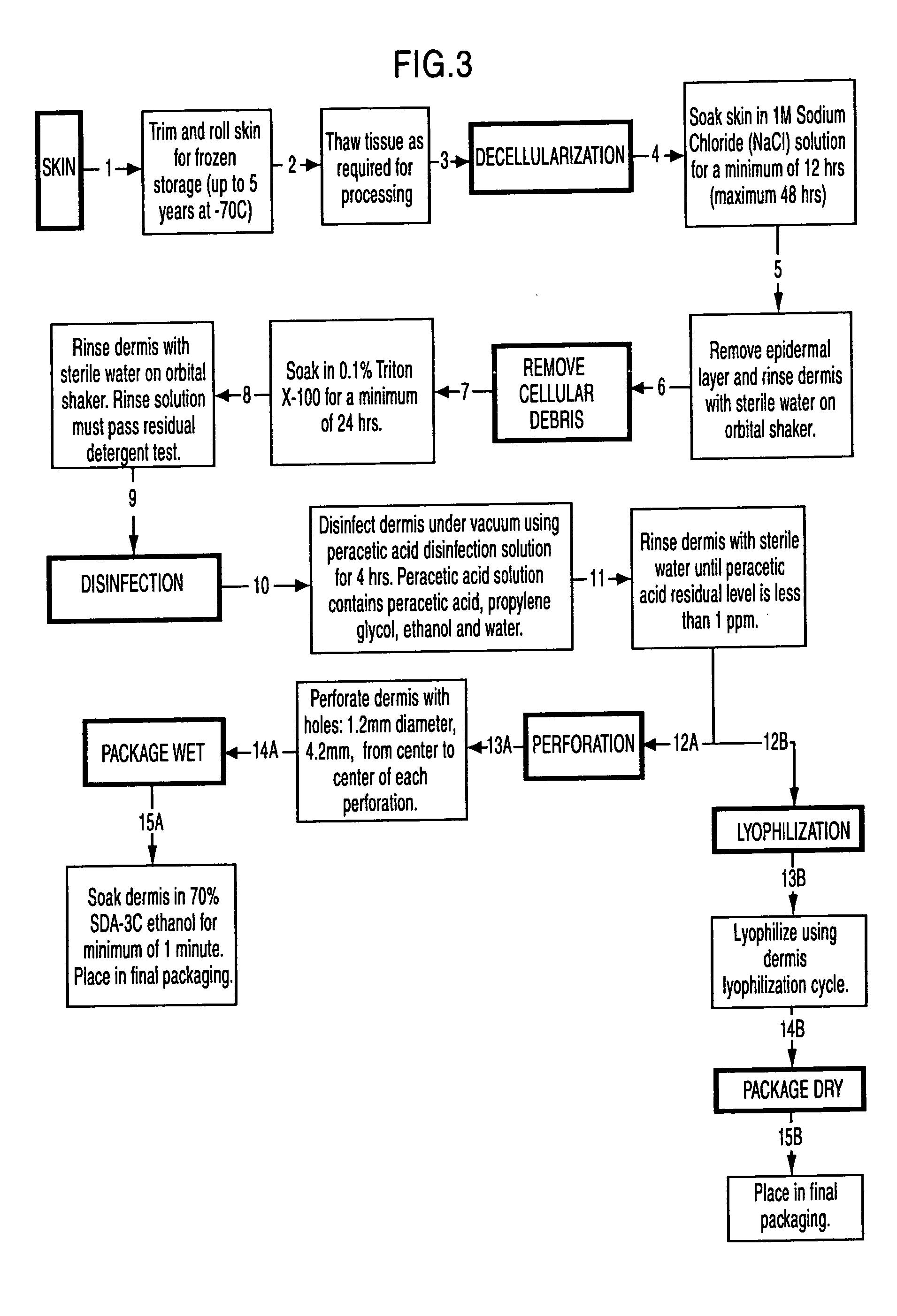Soft tissue processing
a soft tissue and processing technology, applied in the field of soft tissue processing, can solve the problems of narrow therapeutic window between adequate immunosuppression and toxicity, significant risk of tissue rejection associated with transplantation, and threat of infection
- Summary
- Abstract
- Description
- Claims
- Application Information
AI Technical Summary
Benefits of technology
Problems solved by technology
Method used
Image
Examples
example 1
Treatment of Fascia
[0033] A desired frozen soft tissue sample is isolated from a suitable donor and then thawed.
[0034] The thawed tissue is processed and decellularized and is inspected for visual defects and trimmed.
[0035] The trimmed tissue sample is sterilized while soaking the tissue in an antibiotic soak for 1.5 to 24 hours and is rinsed with phosphate buffered saline. If desired at the time of sterilization one or more of the following protease inhibitors may be added; Aminoethylbenzenesulfonyl fluoride HCL (Serine Proteases), Aprotinin (broad spectrum, serine proteases), Protease Inhibitor E-64 (Cysteine Proteases), Leupeptin, Hemisulfate Cysteine Proteases and trypsin-like proteases, Pepstatin A (Aspartic Proteases) and Marmistat (MMP2). If desired a solution with pH of 8.0 can be added which will inhibit lysozomal enzymes
[0036] The processed soft tissue is placed into a stainless steel container which is filled with an antibiotic solution. The antibiotic solution is a p...
example 2
Treatment of Dermis
[0040] Frozen donor tissue is then thawed and then rinsed to maintain moisture. The thawed tissue is processed and decellularized. If desired at the time of decellularization one or more of the following protease inhibitors may be added; Aminoethylbenzenesulfonyl fluoride HCL (serine proteases) (25-100 μm, Aprotinin (broad spectrum, serine proteases) (7.5-30 μm), Protease Inhibitor E-64 (cysteine proteases) (0.05-0.0.20 μm), Leupeptin, Hemisulfate (cysteine proteases) (0.05-0.0.20 μm), EDTA, Disodium (0.025-0.0.10 μm), and trypsin-like proteases, Pepstatin A (Aspartic Proteases). Marmistat (MMP2). The thawed tissue is processed and decellularized and is inspected for visual defects and trimmed.
[0041] Once all blood and lipids are removed from the skin, the water is changed with clean sterile water. Impurities are removed from each piece of skin with a scalpel (epidermal side up during this process). Place each skin piece with the epidermal side up on the cutting...
PUM
 Login to View More
Login to View More Abstract
Description
Claims
Application Information
 Login to View More
Login to View More - R&D
- Intellectual Property
- Life Sciences
- Materials
- Tech Scout
- Unparalleled Data Quality
- Higher Quality Content
- 60% Fewer Hallucinations
Browse by: Latest US Patents, China's latest patents, Technical Efficacy Thesaurus, Application Domain, Technology Topic, Popular Technical Reports.
© 2025 PatSnap. All rights reserved.Legal|Privacy policy|Modern Slavery Act Transparency Statement|Sitemap|About US| Contact US: help@patsnap.com



